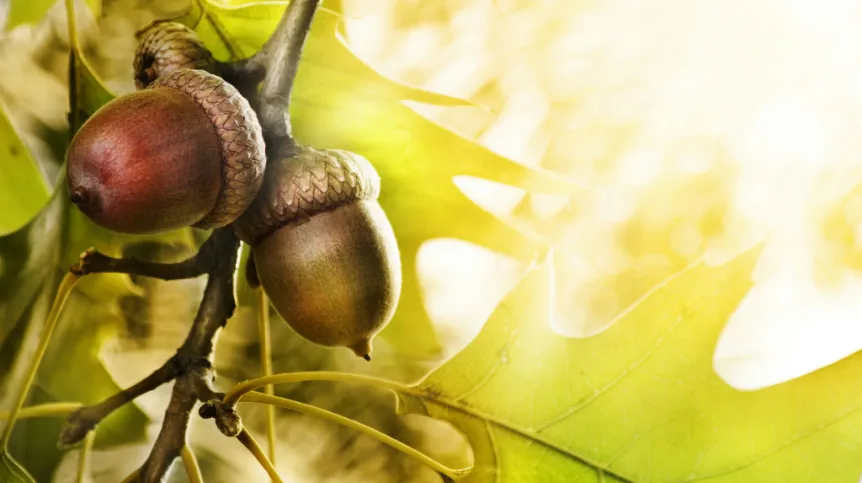
The abundance of acorns in a given year can mean a greater number of cases of Lyme disease two years later. Why? The more acorns, the more mice - carriers of Lyme disease spirochete, which they easily transmit to ticks. These, in turn, transmit the spirochete to people.
The relationship between acorns and the number of cases of Lyme disease in Poland has been described by two young scientists: Michał Bogdziewicz and Jakub Szymkowiak from Adam Mickiewicz University in Poznań. "The volume of acorns falling to the ground determines the number of rodents in the woods. In Poland, this dependence is very strong. In the year following the year abundant in acorns, the number of mice increases 10-12-fold" - Michał Bogdziewicz told PAP.
The problem is that the mice are carriers of Lyme disease spirochete, which is very easily transmitted to ticks. The problem is aggravated by the fact that mice are very "gracious" hosts for ticks. The mortality of the mites on them is significantly lower than on other hosts. The more ticks survive with the transmitted Lyme disease spirochete, the more new cases of Lyme disease in the population. "To sum up: The more acorns in one year, the more patients two years later. One year after a big falling of seeds there are many more mice in the forest, which in the next year favours the tick population and an increase in the incidence of Lyme disease" - described Bogdziewicz.
This trend applies not only to mice but also other rodents, whose number is determined by the amount of seeds. A good example is the bank vole, which carries the Hantavirus that in extreme cases causes respiratory failure and leads to death. "The relationship between the seed-abundant years, bank voles and Hantavirus threat has been clearly demonstrated for neighbouring Germany or Belgium. In Poland it is diagnosed very rarely, but we can expect an increase in the number of recorded cases" - noted the researcher.
In the case of both Lyme disease and Hantavirus, the risk of disease can be very easily predicted. In the eastern United States - explained Bogdziewicz - acorn volume data are used to warn the population about the changing threat of Lyme disease. "After an acorn-rich year, we have two years to speak about it in all possible ways. We can do exactly the same thing in Poland" - he explained.
Researchers from the United States were the first to demonstrate the relationship between the number of acorns and an increase in the incidence of Lyme disease. Their study, however, has not been repeated in any other place in the world. One reason was the huge cost of field work. Researchers from Adam Mickiewicz University solved this problem by using data from the Institute of Hygiene on the number of cases of Lyme disease; from the State Forests on the amount of acorns and from Google Trends on the number of queries concerning the disease.
The study used data from the years 2005-2013. "It is not a huge sample, but the signal from the data is very clear" - emphasised Bogdziewicz. "Although the number of recorded cases of Lyme disease is increasing every year, also as a result of increasing awareness of patients and doctors, two adjacent years can still be compared. For example, in 2010 the average acorn falling rate was about 4 kilograms per hectare. Two years later there were around 8.8 thousand cases of Lyme disease. In 2011, the average amount of acorns was many times greater - 62 kg/ha, and the number of cases of Lyme disease in 2013. jumped to 13,000, more than 30 percent increase. It is quite a substantial change" - he explained.
Results from Google confirmed the relationship in "hard" data. "In the years when we were expecting a large population of mice, one year after a big crop of acorns, people more often type the phrase >>mouse<< in search engine - for example, >>mousetrap<<. Two years after a big crop, they more often search for words >>tick<< and >>Lyme disease<<" - explained the researcher.
"We hope that in time the database will grow and we will be able to repeat our research. However, the results are already a strong premise to go in the field and start collecting hard data, as it was done in the eastern United States" - he added.
The study has been published in the journal "Basic and Applied Ecology".
PAP - Science and Scholarship in Poland, Ewelina Krajczyńska
ekr/ agt/ mrt/
tr. RL













